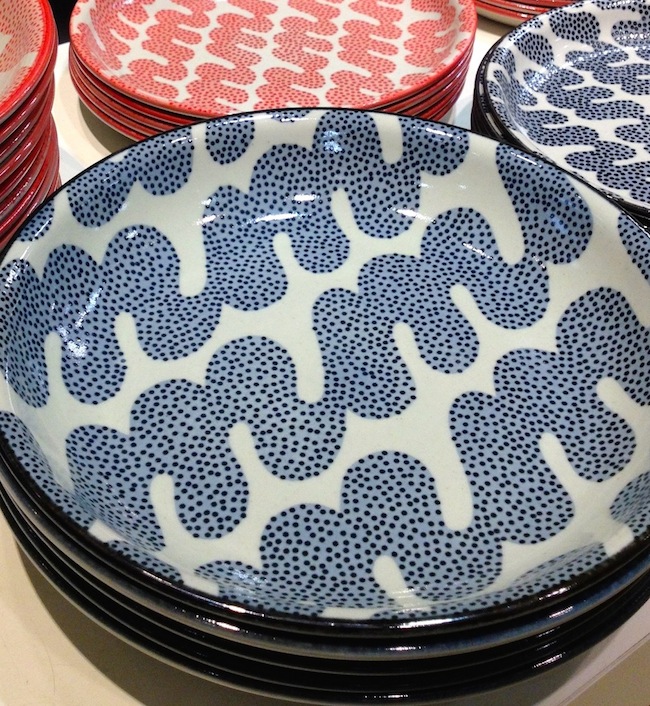YORKLYN, Delaware — House Industries is a studio that combines design with font typography and clothing. It’s a diverse collection of disciplines, but it’s interesting to see cross talk. Case in point: their 2013 ceramic collection Monohara. The sweeping “M” design is adorned with what could be described as a stippling effect. Clearly this is the work of a designer who is having an affair with print.

Monohara has another narrative running under the hood: an empathy and affection for junk. In 2012 the studio visited Hasami in Nagasaki Prefecture in Japan at the behest of Kyohei Baba company, who hired the company to design a new set of tableware.
Artisans have been making ceramics in Hasami for more than 400 years and the majority of cups, bowls and plates were fired in Hasami’s kilns. This means that the trench where workers throw junked ceramics is a treasure trove of historic designs. To hear the studio tell it, trash never sounded so romantic:
We found much of our inspiration quite literally in Hasami’s backyard—the trench filled with 400 years worth of cast offs and blemished items. Artifacts from Hasami’s ceramic trash pit are the best link to the past and one of the keys to Hasami’s future, so Kyohei named his new brand Monohara, which translates colloquially to “The trash pit next to the climbing kiln.”



The design we mentioned earlier references the brushwork of Edo Era Hasami village artisans who made letterforms on Japanese products that were exported to Europe in the 19th century.
The collection includes five plates, six bowls, teacubs, teapots, a compra bottle and a tenugui cloth. They’re accompanied by three different hand-crafted Japanese Paulownia wood boxes.
Do you love or loathe this set of contemporary ceramics? Let us know in the comments.

Add your valued opinion to this post.